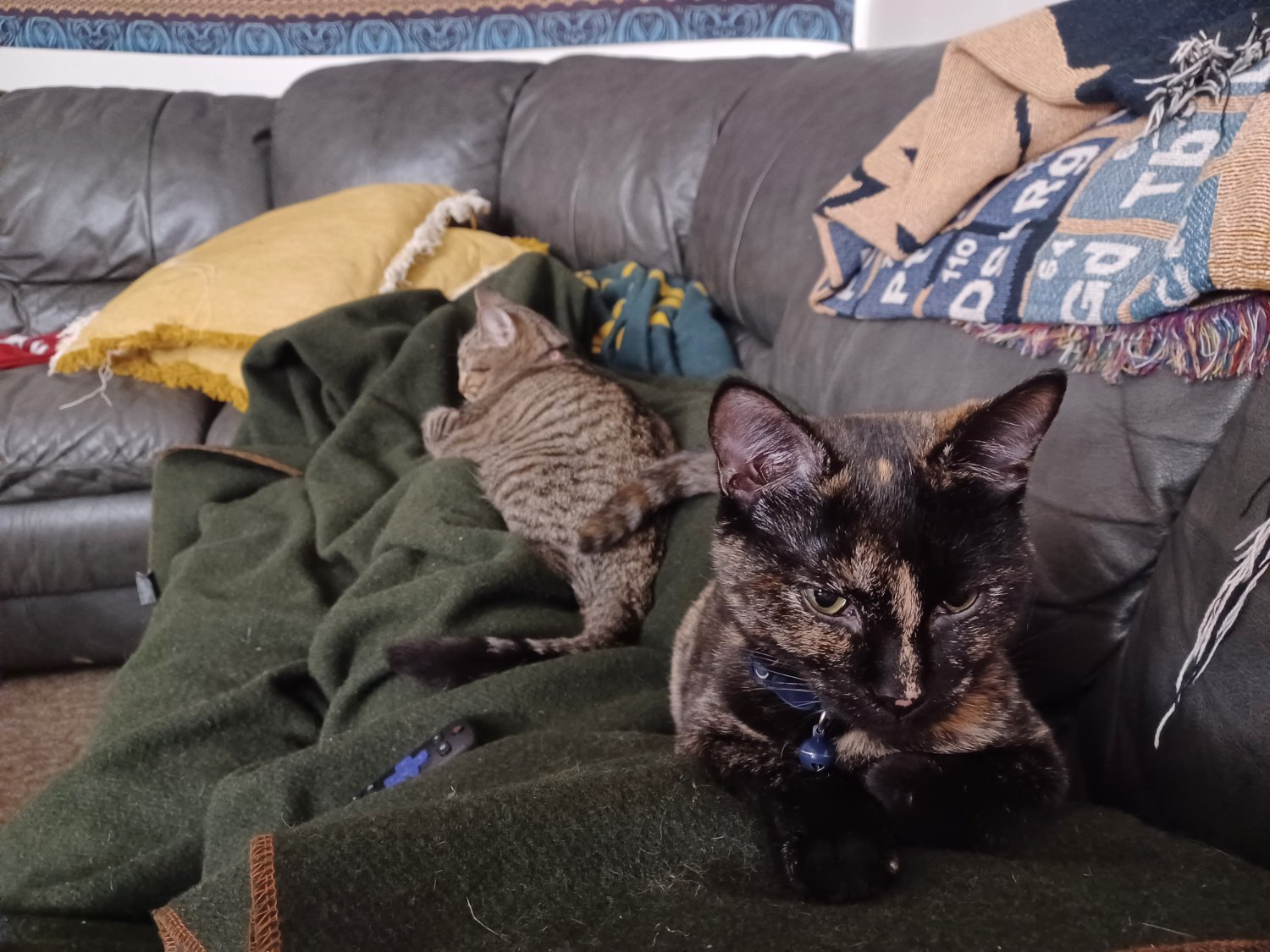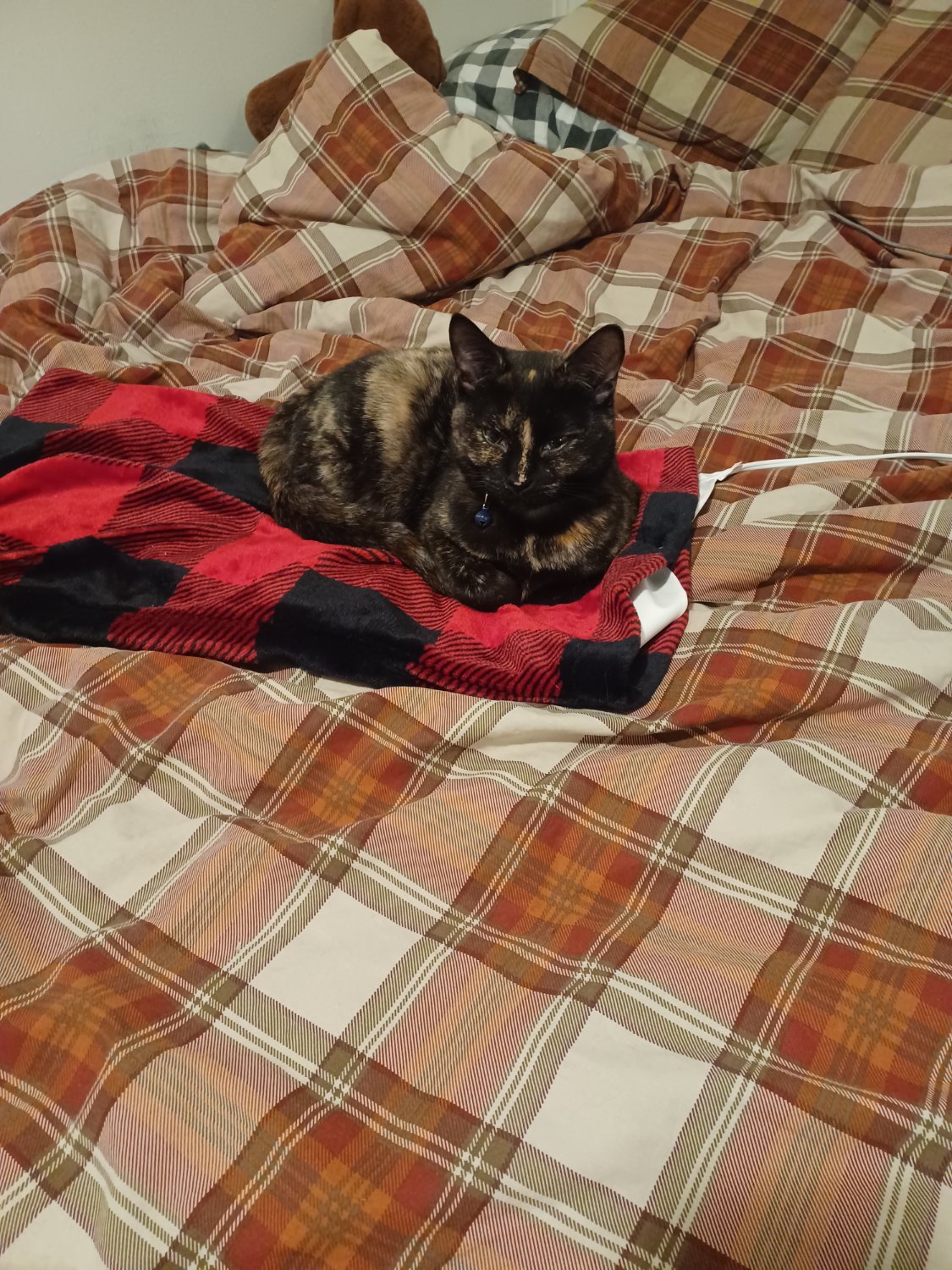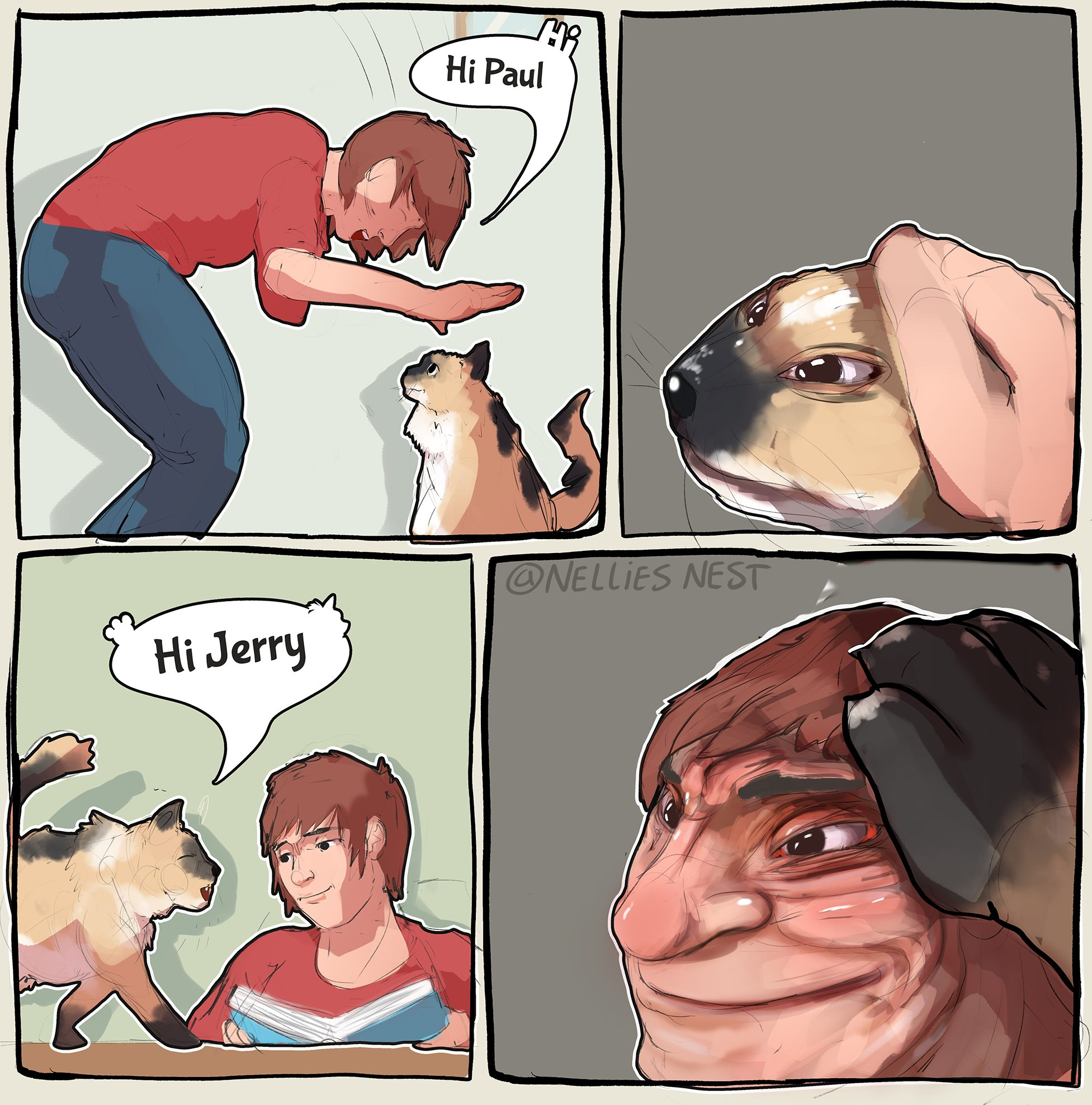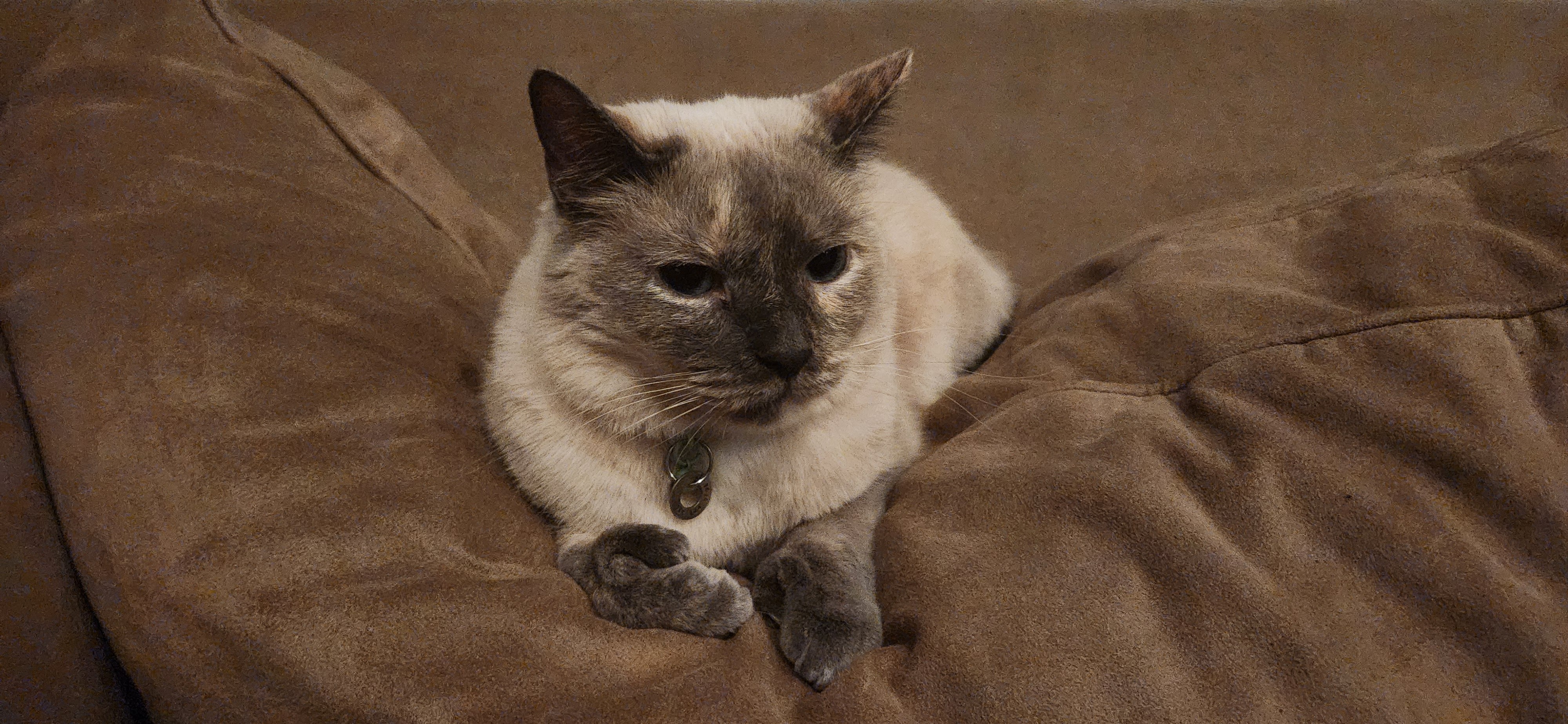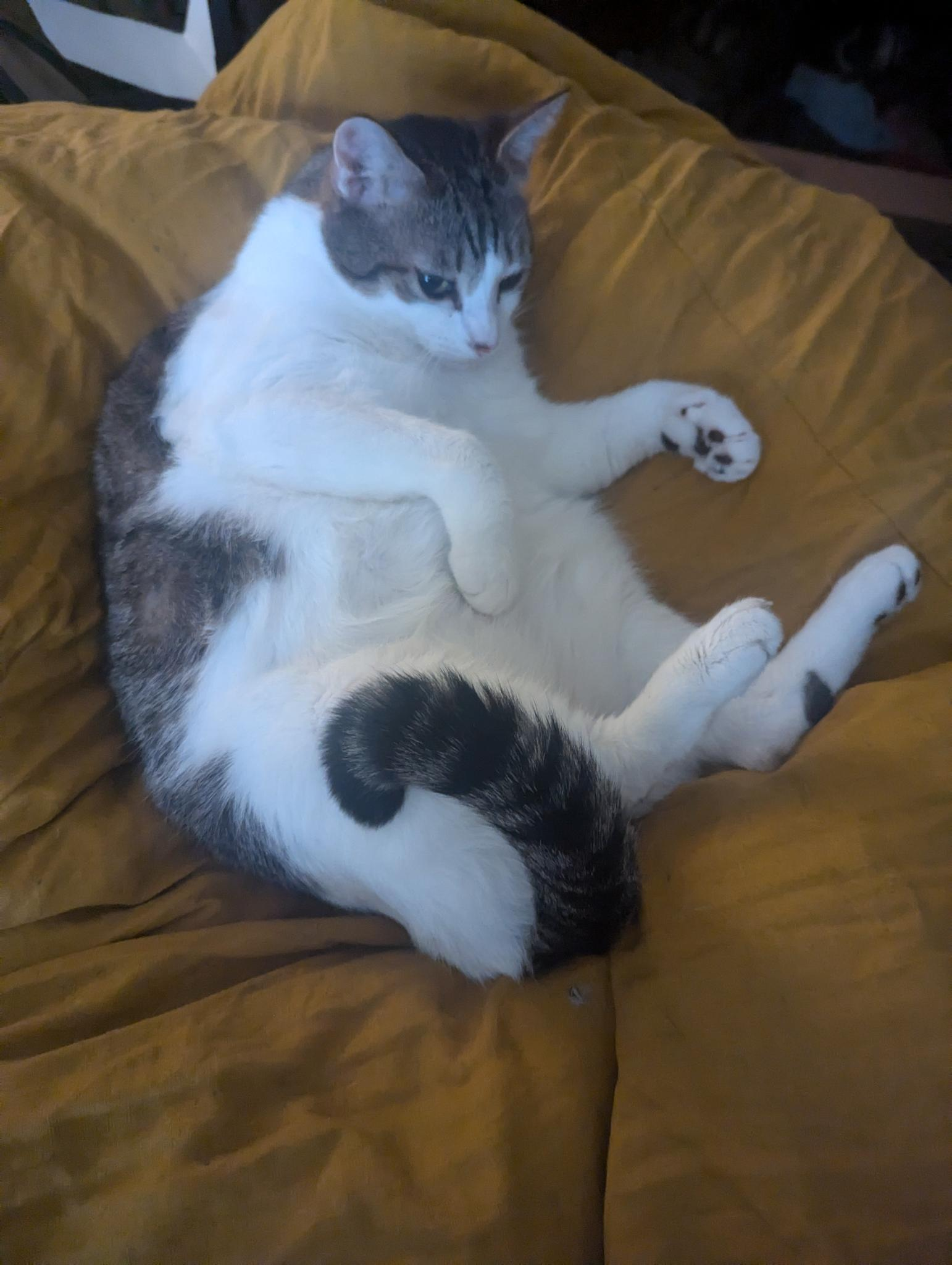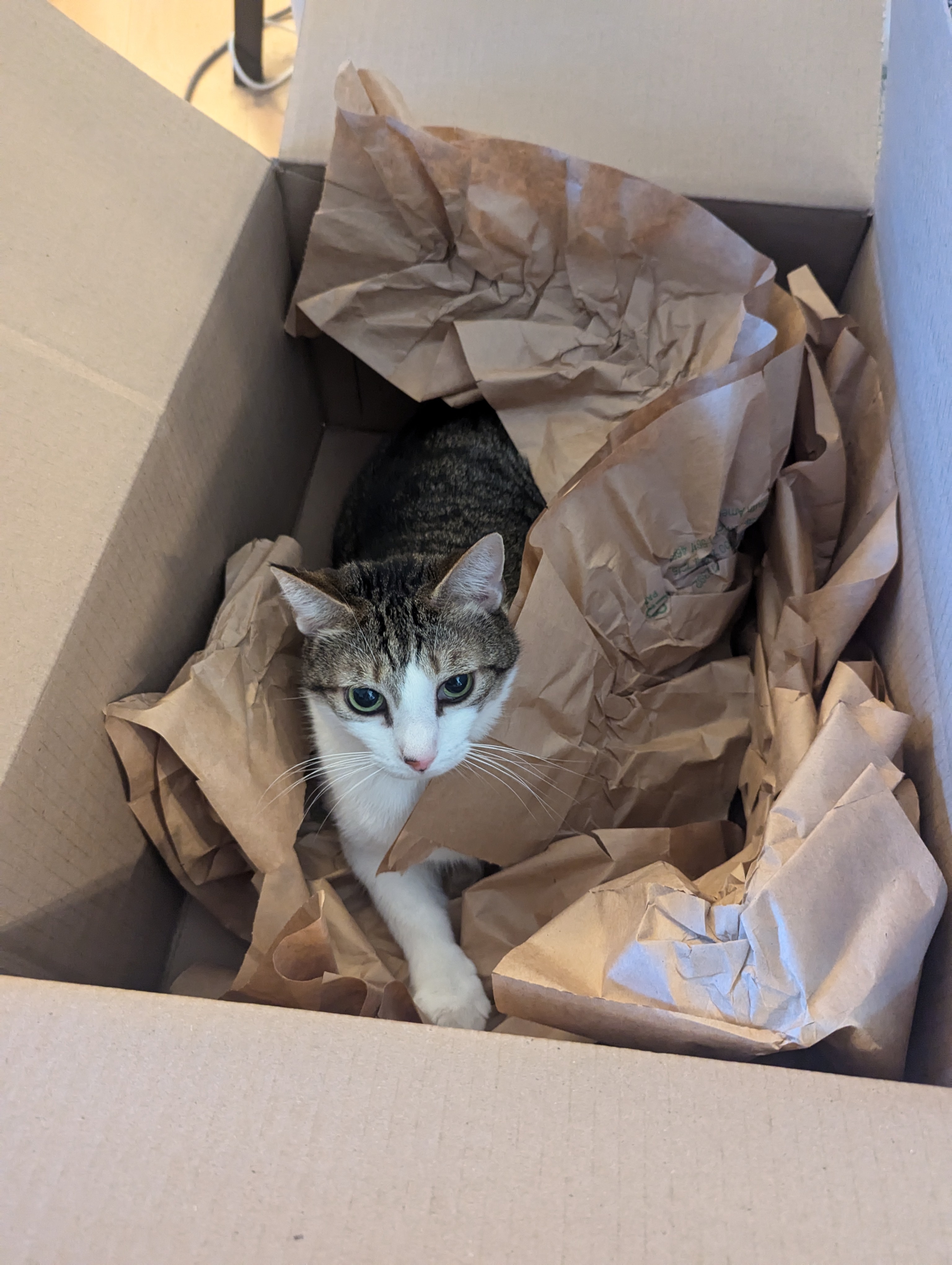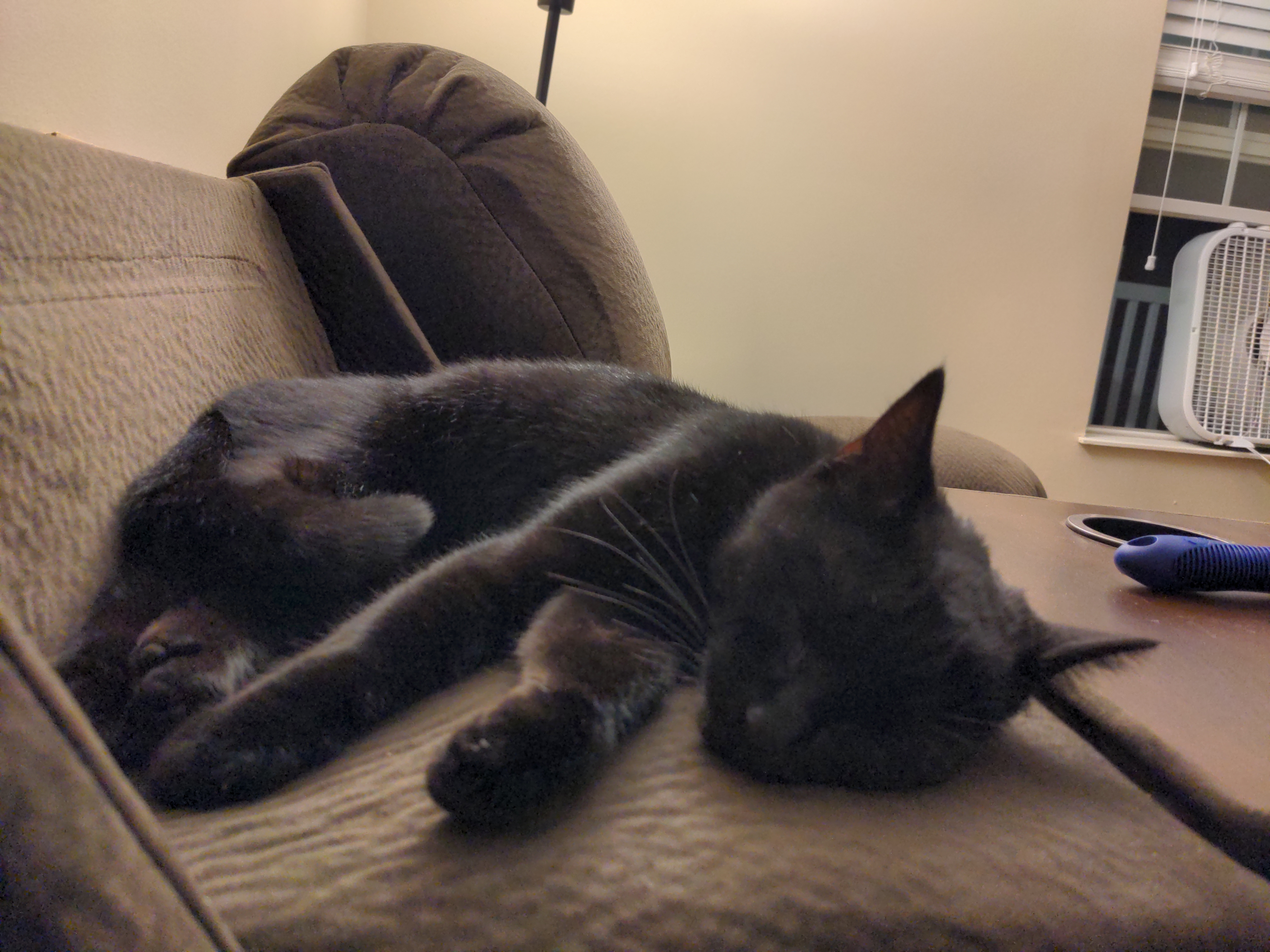📖🐈full text; but you should click the link to see the cool pics that aren't included here
Tabby’s likely ancestor & Earth’s most widespread wildcat is an enigma

28 May 2025 Africa Almost Famous Animals
Share this article
If you liked this story, share it with other people.
Facebook Linkedin Threads Whatsapp Reddit Email
Page link
- The Afro-Asiatic wildcat (Felis lybica) is the world’s most widely distributed small wildcat, but it’s also one of the least studied. The cat’s conservation status is listed as “of least concern” by the IUCN. But due to a lack of data, population trends are unknown, and the species, or subspecies, could vanish before humanity realizes it.
- One of the only long-term studies on the cat’s behavior and population genetics occurred in South Africa’s Kgalagadi Transfrontier Park. It sheds light on a species that is vital to the ecosystems it inhabits and possesses remarkable adaptability.
- At some point, thousands of years ago, F. lybica was domesticated, making it the ancestor of the common house cat (F. catus), which, in evolutionary terms, has become one of the most successful mammal species on Earth.
- Inbreeding with domestic cats has become a serious threat to Afro-Asiatic wildcat conservation. Wildcat experts urge pet owners to spay their house cats. Feral cats should also be spayed, especially in areas bordering preserves where F. lybica lives. Education about this small wildcat could also help with its conservation.
The Afro-Asiatic wildcat (Felis lybica) is the world’s most widely distributed wildcat, but experts and information on the species are scarce.
The species’ range is immense, stretching across most of Africa, Southwest and Central Asia, India, China and Mongolia. But Arash Ghoddousi, lead author for F. lybica’s 2022 IUCN species conservation assessment, says the study team found “few people [who] knew anything about the cats.”
That seeming lack of human curiosity is surprising, considering the domestic tabbies we keep as pets and lavish billions of dollars on annually are descended, and still closely related to, the Afro-Asiatic wildcat.
One researcher who has shown intense interest is Marna Herbst, now a regional ecologist for South African National Parks. Previous research on F. lybica had been based on opportunistic sightings and scat and stomach analysis. Herbst changed that, spending roughly four years and 10-12 hours nightly observing the cats in the harsh unforgiving landscape of the southern Kalahari Desert for her Ph.D. research, published in 2009.
She was the first (and remains the only) scientist to conduct such a long-term study on the species documenting its behaviors and population genetics.
The Afro-Asiatic wildcat (Felis lybica) is the world’s most widely distributed small wildcat, and an ancestor of the domesticate cat. Pictured is a female of the subspecies F. lybica cafra in South Africa’s arid Kalahari. Image courtesy of Marna Herbst.
In search of the common wildcat nobody knows
Herbst carried out her study in the Kgalagadi Transfrontier Park, a known African wildcat habitat straddling the borders of South Africa and Botswana. The small wildcats there were assumed to be far enough from urban areas to still be genetically pure, not having interbred with domestic cats (deemed one of the wild species’ greatest risks).
Sighting the little wildcats relatively often, Herbst hoped they would also be relatively easy to catch, collar and track. They weren’t. Twenty years later, she recalls the challenges.
The small cats are shy and elusive, taking cover in fox or aardvark holes and under tree roots; on farms, they hide amid tall, dense corn stalks. Adding to her difficulties, the cat is nocturnal and practically impossible to study in its habitat without aid of radio telemetry.
To accomplish that, they must first be caught. Herbst recalls that in trying, she captured lots of other stuff. Jackals in particular were attracted to the chicken-baited cage traps. But over time, she succeeded in catching and collaring numbers of the elusive cats.
Another hazard of low-budget research on a noncharismatic species: Herbst’s hand-me-down 4×4 vehicle, in which she spent countless hours alone rumbling in the dark over roadless terrain, took a terrible beating.
But those nights rewarded her with sights few ever see, encountering the park’s big cats, including the famed black-maned lion (Panthera leo leo), cheetah (Acinonyx jubatus) and leopard (P. pardus). Once in the dark, while sipping coffee inside her 4×4, she was startled by a full-grown hyena that nonchalantly sniffed the side-view mirror. They’re “much bigger than you think,” she says.
Over time, Herbst came to know the Afro-Asiatic wildcat as “a really special little species that plays a vital role in ecosystems.”
A radio collared Afro-Asiatic wildcat. Researcher Marna Herbst spent four years tracking the solitary cats across Africa’s harsh Kalahari Desert landscape. Her work represents one of the only in-depth, long-term studies on the species. Image courtesy of Marna Herbst.
A small cat with big adaptability
You could be forgiven for mistaking an Afro-Asiatic wildcat for a family pet. They’re the size of a large domestic cat (F. catus), but with longer legs. Their coloration varies by region from reddish, sandy and tawny brown, to greyish. They sport faint tabby stripes or spots, more pronounced in humid areas, and paler and darker in drier climes. Their tails are slim and tapered with a dark tip. A distinguishing feature, Herbst says, is the pinkish-orange tint of their ears.
Afro-Asiatic wildcats are highly adaptable to landscape (especially bush and steppe), season and prey availability. They prefer hunting small rodents but dabble in reptiles and invertebrates. Herbst recalls male cats taking down spring hares roughly the same size as they were. Cats with waterholes in their territories became bird-hunting specialists. One female was great at hunting sandgrouse as they came to drink. The stomach of an Afro-Asiatic wildcat from Oman contained beetles, grasshoppers, lizards, mammal fur and a date pit.
The species is mostly solitary and roams widely. In the United Arab Emirates, a collared cat had a larger home range (52.7 square kilometers or 20.3 square miles), far larger than that reported in the more optimal habitat (around 3.5 km² or 1.4 mi²) of the Kalahari, where food and water are relatively easy at hand.
Ghoddousi says the wildcat’s remarkable adaptability to various habitats, tolerance of different elevations and climates, plus its capacity to coexist with larger predators make it very special — allowing it to spread over two continents. Because they’re so widely distributed, with incidental sightings reported from many locations, the species is considered relatively stable and “of least concern.”
But Ghoddousi warns this might not reflect the species’ true state in the wild. Due to lack of research, and therefore lack of data, the real-world trend for far-flung Afro-Asiatic wildcat populations remains unknown. Ghoddousi says the big risk is that, as global change escalates, the species could slip away before science notices and conservationists can take action.
The range of the Afro-Asiatic wildcat (F. lybica) as of 2015. While it is the world’s widest spread wildcat, it has barely been studied and scientists know little about it. Image by BhagyaMani via Wikimedia Commons (CC BY-SA 4.0).
Ranging over such a wide area, the Afro-Asiatic wildcat goes by many regional names. It’s the African wildcat to some, the Asiatic wildcat to others, and the Indian desert cat to still others.
Scientifically, the Afro-Asiatic wildcat is divided into three evolutionarily similar subspecies. The first, F. lybica lybica, occurs in Eastern, Western and Northern Africa and the Arabian Peninsula. The second, F. lybica cafra (the topic of Herbst’s Ph.D.), occurs in Southern Africa. The third, F. lybica ornata, is found in Southwestern and Central Asia, Pakistan, India, Mongolia and China. The precise boundaries of subspecies’ ranges are unclear.
Until 2017, these three subspecies were lumped together with the European wildcat and considered subspecies of F. silvestris. But further investigation demanded a split: Now, populations that roam from the steppes and bush of Africa and Asia are classified as F. lybica, while the European wildcat is classified as a separate species (with its bushy tail and more distinctive coat markings, F. silvestris occurs in fragmented populations across Europe, Turkey and the Caucasus.
These geographically separated cat populations mixed things up genetically at various points in time, due to natural changes or, sometimes, thanks to people. Thousands of years ago, this long-term and complex intermingling process birthed the first domestic cat.
(Left) In South Africa’s Kgalagadi Transfrontier Park, the Afro-Asiatic wildcat shares its habitat with the protected area’s other, more famous feline species, including the cheetah. Large and small wildcats often share habitat, each having their own niche. (Right) Researcher Marna Herbst recounts how, when she set initially set traps to capture wildcats for her study, she captured many other species too, especially jackals attracted to the chicken she used as bait. Images by Petro Kotze.
The domestication of Felis lybica
Paleogeneticist Claudio Ottoni wouldn’t describe himself as a cat person, and his work takes place far from the wild. But under his microscope, the ancient lives and movements of the Afro-Asiatic wildcat come to life, revealing hints to the tantalizing mystery as to how it long ago threw in its lot with humanity to evolve into today’s domestic cat species.
Paleogeneticists, it turns out, find the small wildcat just as elusive as field biologists. Compared with other domesticated animals, hypotheses about early cat domestication remain grounded in scant evidence and open questions. Ancient cat bones are scarce, and distinguishing differences between wild and domestic skeletal features is challenging.
But Ottoni has been a dogged researcher, puzzling for years over perplexing data, embracing and developing a hypothesis, then revising the shape of that hypothesis as new technology and data become available to move toward a more robust theory.
An early theory, published in 2017, was that farmers in southwest Africa had domesticated cats and brought them to Cyprus in the early Neolithic period (at least 7,000 years ago) to control rats and mice that damaged stored grain.
This origin story was based on clues found in the DNA of 352 long-dead felids. Researchers analyzed maternally inherited mitochondrial DNA in bits of cat bone and teeth, as well as skin and hair samples found at archaeological sites.
The oldest samples included a complete cat skeleton, dated to roughly 7500 BCE, found buried with a man on Cyprus, suggesting the hypothesis that domestication started here.
Other samples included six skeletons, dating to around 3700 BCE, found in an elite Predynastic Egyptian cemetery. Still other examples were found in archaeological digs at the Roman-Egyptian port of Berenike on the Red Sea. Ottoni also compared the ancient cat DNA samples with modern wildcat samples from Bulgaria and Eastern Africa.
Together, the DNA seemed to indicate that the domestic cat’s worldwide conquest began in the Fertile Crescent (perhaps on Cyprus some 7,000 years ago), then gained momentum during Classical Antiquity about 2,500 years ago, when the Egyptian cat successfully spread throughout the Old World along land and sea trade routes.
This analysis seemed to confirm that while the Afro-Asiatic wildcat was the ultimate source of the domesticated cat, its evolution and spread wasn’t simple: Though the North African/Southwest Asian F. lybica was a source, both the Near Eastern and Egyptian F. lybica populations also contributed to the domestic cat’s gene pool at several points in history.
Claudio Ottoni sampling DNA of ancient cat remains in the laboratory of the University of Rome Tor Vergata. He is investigating the early domestication of cats. Image courtesy of Claudio Ottoni and Marco De Martino.
The mandible of a cat found on the site of Haithabu, a Viking trading settlement active between the 8th and 11th centuries, located on the Jutland Peninsula in Germany. Ottoni has analyzed the ancient remains of cats wherever he can find them — including ancient Egyptian mummified cats — to trace the trail of domestication. Image courtesy of Claudio Ottoni and Marco De Martino.
New tech, new data, better theory
Since 2017, new technology and more data have modified, added detail and complicated this storyline. While earlier work relied on mitochondrial DNA analysis, researchers were able to analyze nuclear DNA for an updated theory in 2025.
This higher-resolution analysis reveals the full genetic code of individual cat specimens, including not only the maternal, but also the paternal inherited DNA. It provides “the actual ancestry,” Ottoni says. And this new data punched an unexpected hole in the previous theory of cat domestication. For one, domestication happened thousands of years later than thought, and then was probably not due to African farmers who traveled to Cyprus.
“Evolutionarily speaking, it’s a very peculiar case,” Ottoni says of the discordance between the 2017 and 2025 DNA findings.
The new data showed what scientists call “mitonuclear discordance,” where analyses using mitochondrial DNA markers yield different conclusions than those using nuclear DNA markers. Surprisingly, samples that the researchers thought were F. lybica turned out to be those of the European wildcat. So, while wildcats were indeed taken to Cyprus, Ottoni explains, this might have been an isolated attempt of Neoolithic people to domesticate European wildcats, rather than wildcats brought from Africa.
The evidence now suggests that European wildcat and African wildcat distribution probably overlapped in the past, perhaps due to climatic shifts or other natural causes. Because both species are interfertile, they sporadically bred, leading to a mixed population living in Turkey.
The skull of an Egyptian cat mummy in the collection of the Natural History Museum of London. While mitochondrial DNA analysis led to the theory that domestic Afro-Asiatic cats spread to Europe with Neolithic farmers, nuclear DNA brought surprises. According to an updated theory, they were only introduced to Europe over the last 2,000 years, most likely from North Africa. Image courtesy of Claudio Ottoni and Marco De Martino.
According to the updated theory, domestic cats with a lybica genome only appeared in Europe about 2000 years ago, during Classical Antiquity, Ottoni says, but then adds, “We can’t say precisely when the domestication process that led to the cat dispersal started.”
Perhaps, and more likely, domesticated cats did come first from Egypt, where cats were buried in the Hierakonpolis (the ancient Egyptian royal residence). But whatever the exact origin story, we do know that “in evolutionary terms, [the domestic cat is] one of the most successful mammal species in the world,” Ottoni says.
Domestic cats today are found on every continent except Antarctica. (They were introduced to sub-Antarctic Marion Island in 1949 to control mice, but were later eradicated due to negative impacts on native birds.)
Researchers have also learned that the close genetic kinship shared by domesticated and wild felids species really matters: The widespread prevalence of F. catus, and its capacity to interbreed with F. lybica, is among the most serious threats to the Afro-Asiatic wildcat’s survival.
The Afro-Asiatic wildcat as portrayed (left) on a 1994 stamp of Azerbaijan and (right) on a 1979 stamp of Mozambique. Images by (left) the Post of Azerbaijan via Wikimedia Commons (PD-AZ exempt) and (right) kot_ucheniy via Flickr (CC BY-NC-SA 2.0).
A small cat facing big challenges
Hybridization with domestic cats is widespread across the Afro-Asiatic wildcat’s range, though some studies, including Herbst’s work, have shown that wildcat populations in South Africa at least, especially in protected areas, appear to remain genetically pure.
However, according to the 2022 IUCN species assessment, there’s insufficient information on the level of hybridization with domestic cats in other parts of the range, and therefore, this threat should not be underestimated or ignored.
As such, Herbst points to responsible pet ownership as key to Afro-Asiatic wildcat survival. That includes spaying by pet owners of their domestic cats that aren’t being bred, and also community spaying of feral cats (especially in urban areas bordering protected areas where wildcats live). Education is important, too, she notes.
Though spaying is an important conservation measure, spayed domestic cats can still seriously impact wildcat food sources. The IUCN assessment points out that feral domestic cats compete with wildcats for prey and space, and there is also a high potential for disease transmission between them.
Other threats include the risk of roadkill and poisoning and conflicts with farmers and local people due to attacks on poultry by wildcats leading to retaliatory killings. Another serious threat, Ghoddousi says, is lack of information, causing scientists to underestimate the risk a species faces. Unfortunately, that is always the case when you don’t have enough data, he says. You can’t make a meaningful judgment about a species status if you simply do not know.
Banner image: Afro-Asiatic wildcats are hugely adaptable to their ecosystems but are in danger from inbreeding with domestic cats. This Afro-Asiatic wildcat kitten (of the subspecies F. lybica cafra_) shows the distinctive peach-pink tint to this genetically pure wildcat’s ears. Image courtesy of Marna Herbst._
cross-posted from: https://rss.ponder.cat/post/192697
The Afro-Asiatic wildcat (Felis lybica) is the world’s most widely distributed wildcat, but experts and information on the species are scarce. The species’ range is immense, stretching across most of Africa, Southwest and Central Asia, India, China and Mongolia. But Arash Ghoddousi, lead author for F. lybica’s 2022 IUCN species conservation assessment, says the study team found “few people [who] knew anything about the cats.” That seeming lack of human curiosity is surprising, considering the domestic tabbies we keep as pets and lavish billions of dollars on annually are descended, and still closely related to, the Afro-Asiatic wildcat. One researcher who has shown intense interest is Marna Herbst, now a regional ecologist for South African National Parks. Previous research on F. lybica had been based on opportunistic sightings and scat and stomach analysis. Herbst changed that, spending roughly four years and 10-12 hours nightly observing the cats in the harsh unforgiving landscape of the southern Kalahari Desert for her Ph.D. research, published in 2009. She was the first (and remains the only) scientist to conduct such a long-term study on the species documenting its behaviors and population genetics. The Afro-Asiatic wildcat (Felis lybica) is the world’s most widely distributed small wildcat, and an ancestor of the domesticate cat. Pictured is a female of the subspecies F. lybica cafra in South Africa’s arid Kalahari. Image courtesy of Marna Herbst. In search of the common wildcat nobody knows Herbst carried out her study in the Kgalagadi Transfrontier Park, a known African wildcat…This article was originally published on Mongabay
From Conservation news via this RSS feed
















